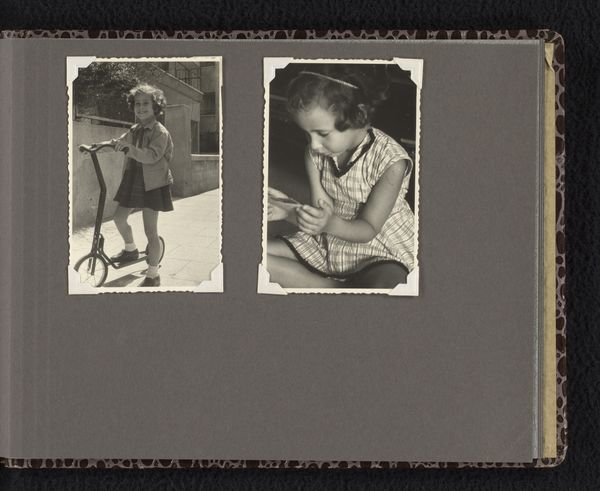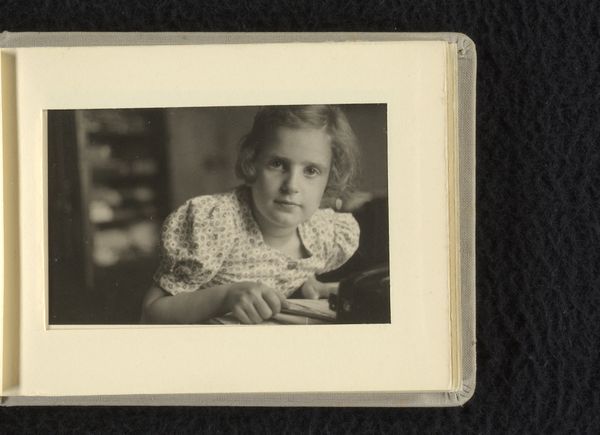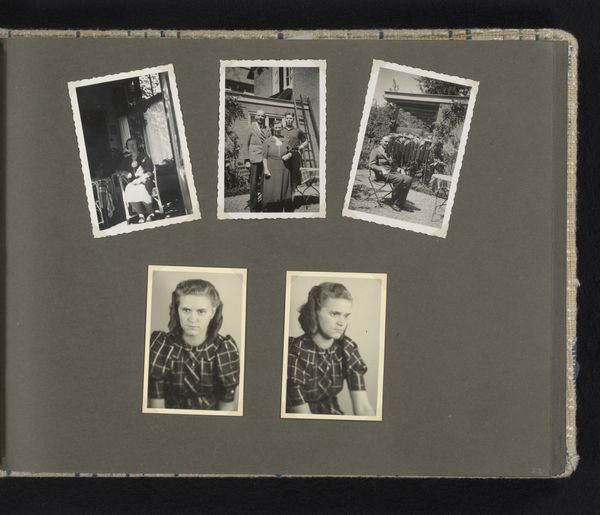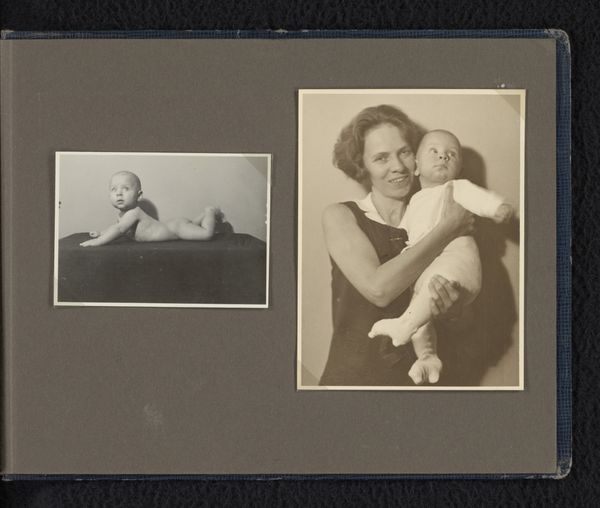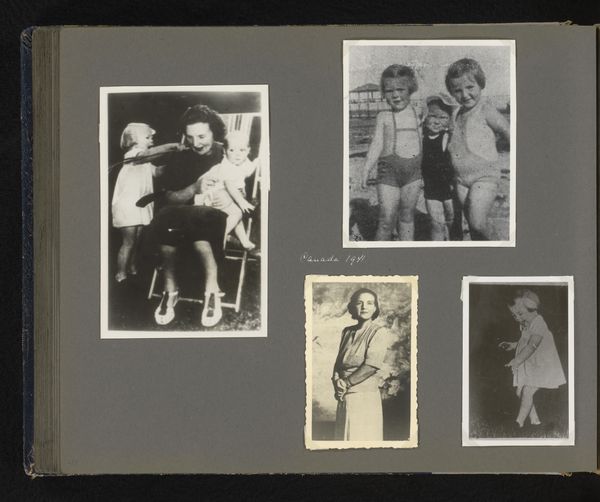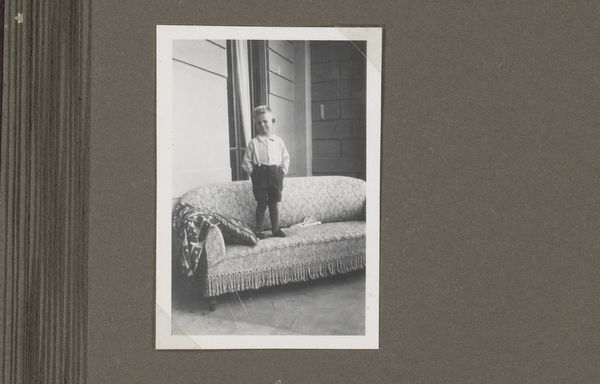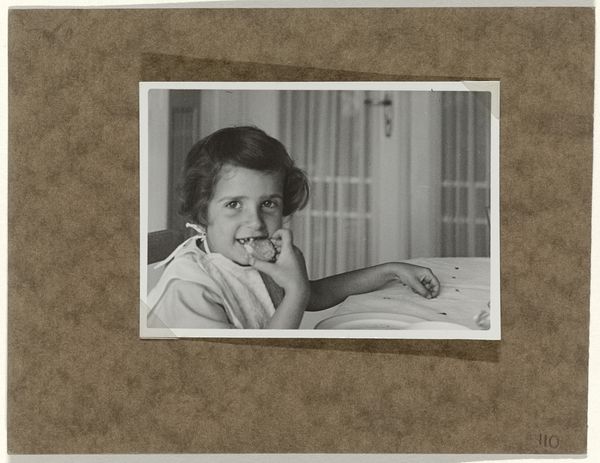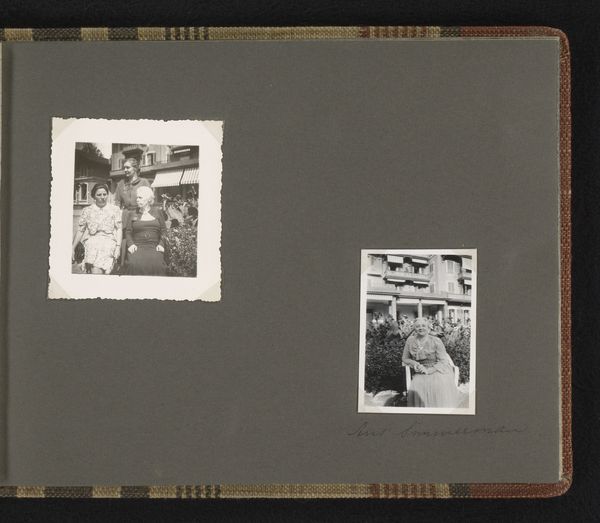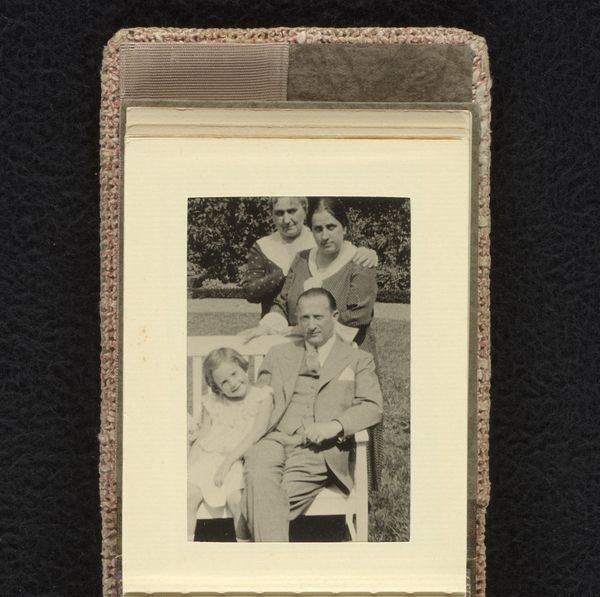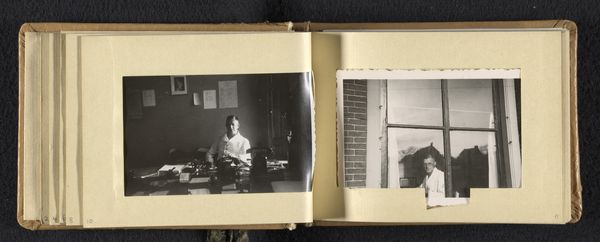
Kinderen, waarschijnlijk kinderen van persoonlijke bekenden van Isabel Wachenheimer, 1947-1955?, Israël/Verenigde Staten? 1947 - 1955
0:00
0:00
photography, gelatin-silver-print
#
portrait
#
sculpture
#
photography
#
gelatin-silver-print
#
genre-painting
Dimensions: height 105 mm, width 70 mm, height 190 mm, width 250 mm
Copyright: Rijks Museum: Open Domain
Curator: So here we have photographs of children, made by Isabel Wachenheimer sometime between 1947 and 1955, probably in either Israel or the United States, preserved as gelatin-silver prints within what looks like a family album. There's a quietness to the compositions and a rawness about the texture of the print; it really brings forth a nostalgic sentiment. How would you begin to interpret these works? Editor: Well, I am intrigued by the use of the family album format itself. It highlights the means of photographic production as an item of material culture: photographs in private, familial settings that seem very personal. I suppose the value really lies in this particular configuration as an item of material exchange. Curator: Exactly. These aren't formally staged studio portraits intended for public display, but rather intimate snapshots preserved within a domestic context. How do the materials themselves – the photographic paper, the album – contribute to the meaning of the artwork, given the time period it was produced? Editor: The accessibility of the photographic materials seems relevant here. After WWII, the use of more common cameras and readily available materials emphasizes the process of photography itself becoming embedded in familial activities, rather than solely a tool of professional production. Curator: Precisely. The gelatin-silver print, while established, was still a readily accessible medium for capturing these moments. Considering this, how does it speak to issues of labor, accessibility, and democratization within the photographic arts, if at all? Editor: I believe it showcases a shift away from elitist notions surrounding the means of photographic reproduction by showing us its entry into personal collections of people not usually considered 'artists.' Curator: This democratization of photography, and its inclusion in everyday life through something as commonplace as a family album, really challenges our conventional definition between art and craft. Editor: It's quite interesting seeing art historical conventions through a lens focused on materiality! Curator: Yes! And this method allows us to reassess the consumption and distribution of art within wider societal and personal settings. Editor: Thank you for elaborating! It is insightful to think of the processes through a materialist approach.
Comments
No comments
Be the first to comment and join the conversation on the ultimate creative platform.

